Moissanite V. Diamonds | The Simply Better Choice
June 5 | By ESPA Jewelry
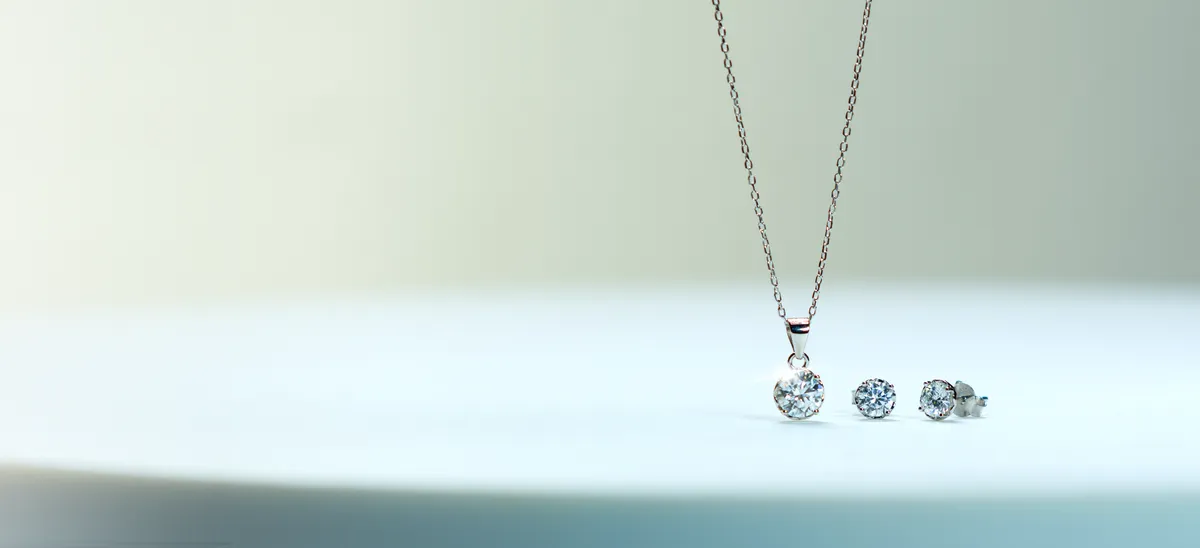
Diamonds have been the gold standard for luxury, love, and all things fashionable - but recent developments are throwing the past century’s obsession into question.
The truth is… diamonds have a dark side. Concerns over the environmental, ethical, and economic impacts of diamonds are bubbling to the surface. Millions are looking for a better solution for their needs… and are finding it in moissanite.
What Is Moissanite?
Discovery
Moissanite was first discovered in 1893 by the French scientist Henri Moissan, who found microscopic particles of the gemstone in a meteorite crater in Arizona.
Initially mistaken for diamonds, these crystals were later identified as silicon carbide.
Moissan’s discovery marked the beginning of moissanite’s journey from celestial origins to becoming one of the most sought-after gemstones on Earth.
Current Day
Things are different today.
The moisannite used in modern jewelry is lab-created using advanced technology to simulate the high-pressure, high-temperature conditions under which natural moissanite forms.
This results in gemstones that are virtually identical to those found in nature, without the need to mine them!

"The advancement of science is slow; it is effected only by virtue of hard work and perseverance"
-Henri Moissan
What Makes Moissanite Special?
One of the most remarkable features of moissanite is its shine.
Moissanite has a higher refractive index (also known as “fire”) than diamonds, meaning it bends light more efficiently and produces a brighter sparkle and color reflection. This dazzling display of light makes moissanite stand out even among the finest diamonds. .

Benefits
Additionally, moissanite is incredibly durable, with a hardness rating of 9.25 on the Mohs scale, second only to diamonds.
This hardness ensures that moissanite can withstand daily wear and maintain its beauty over time.
As well, all moisannite gemstones are 'perfect'. Unlike natural diamonds which may be damaged in the mining process, or come with 'inclusions' formed naturally in the process, a moisannite gem will be uniformly perfect at every price.
Because of these benefits, moissanite has quickly risen to become the world’s preferred diamond alternative.
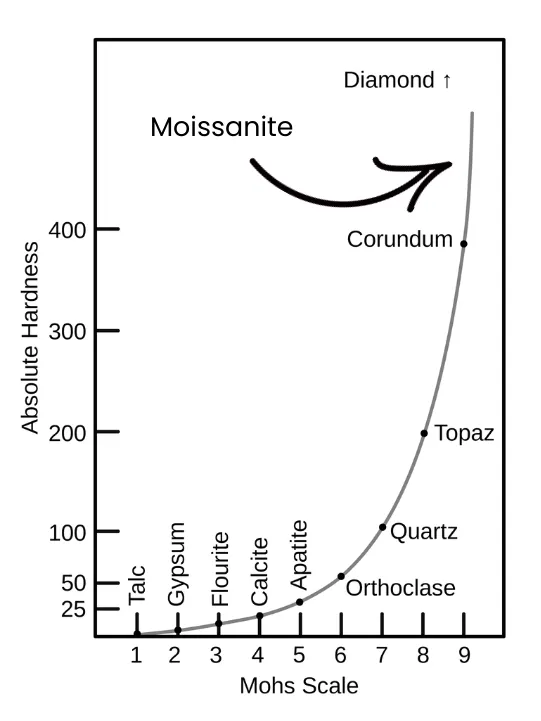
Moh's Hardness Scale w. Moissanite
Better for the Planet
The current diamond industry is one of the biggest contributors to environmental destruction. How?
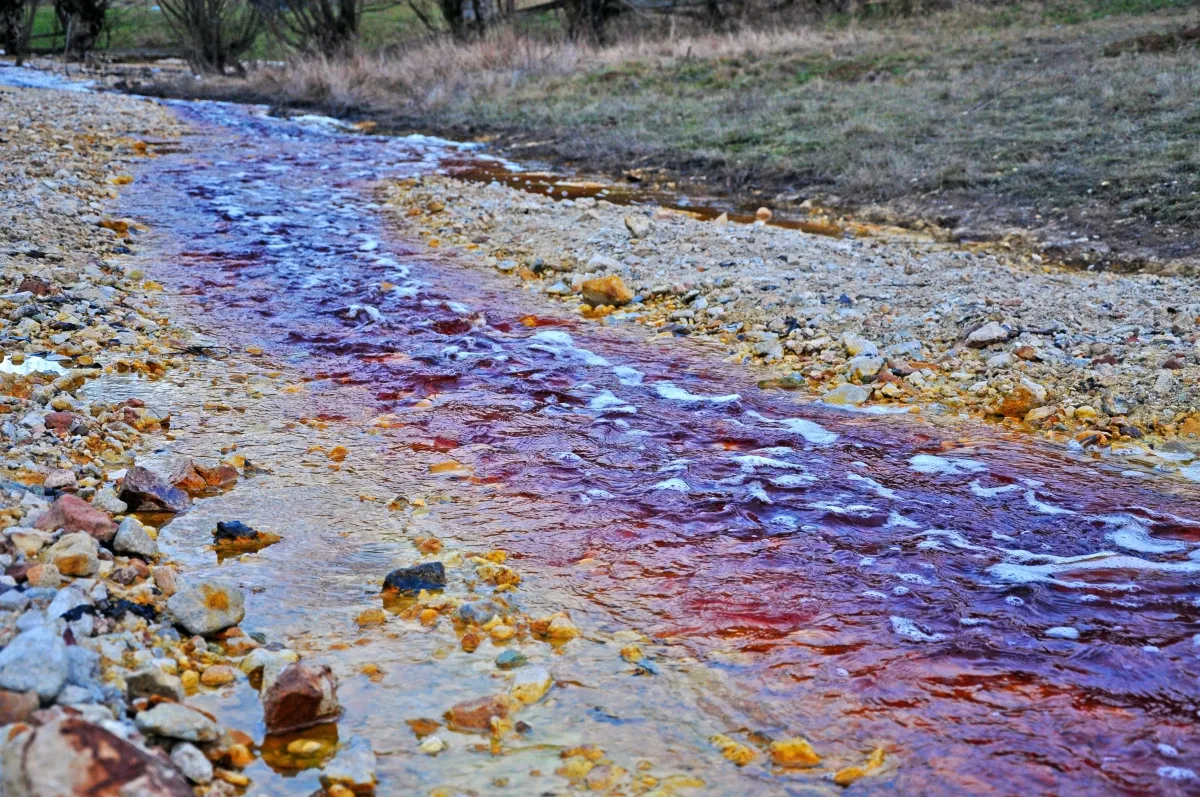
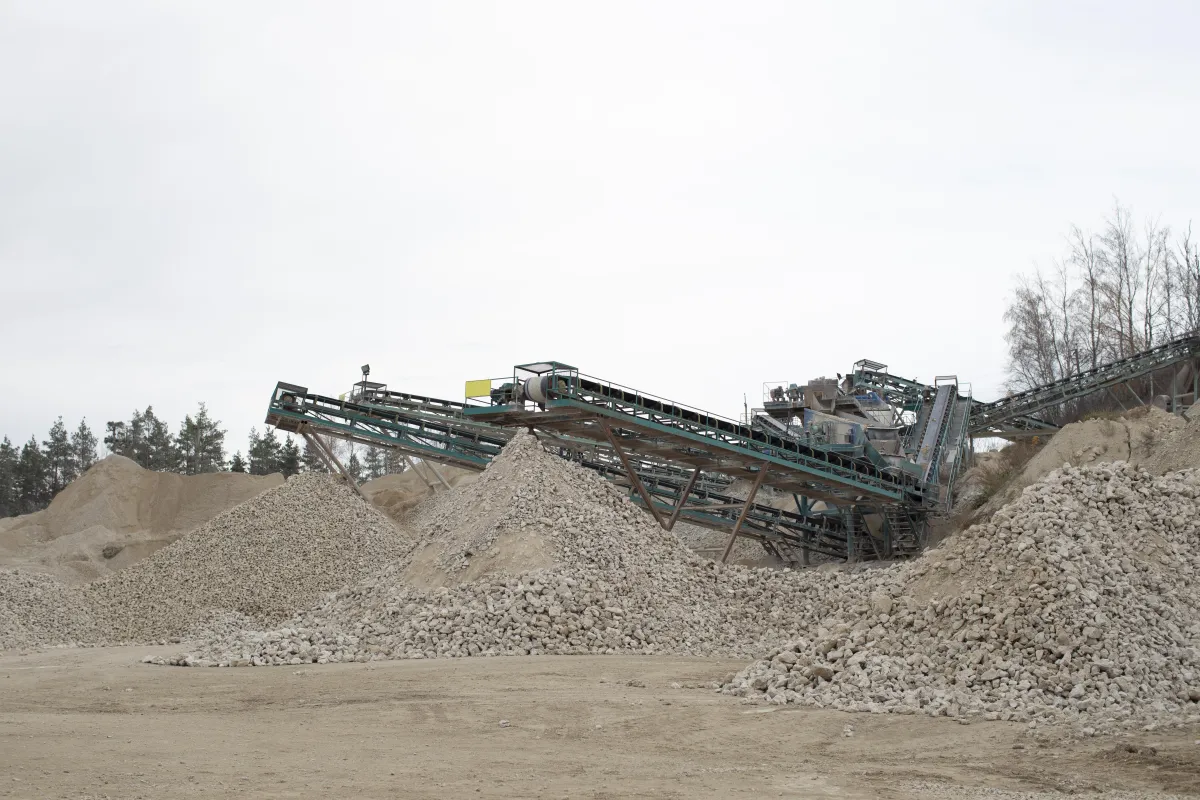
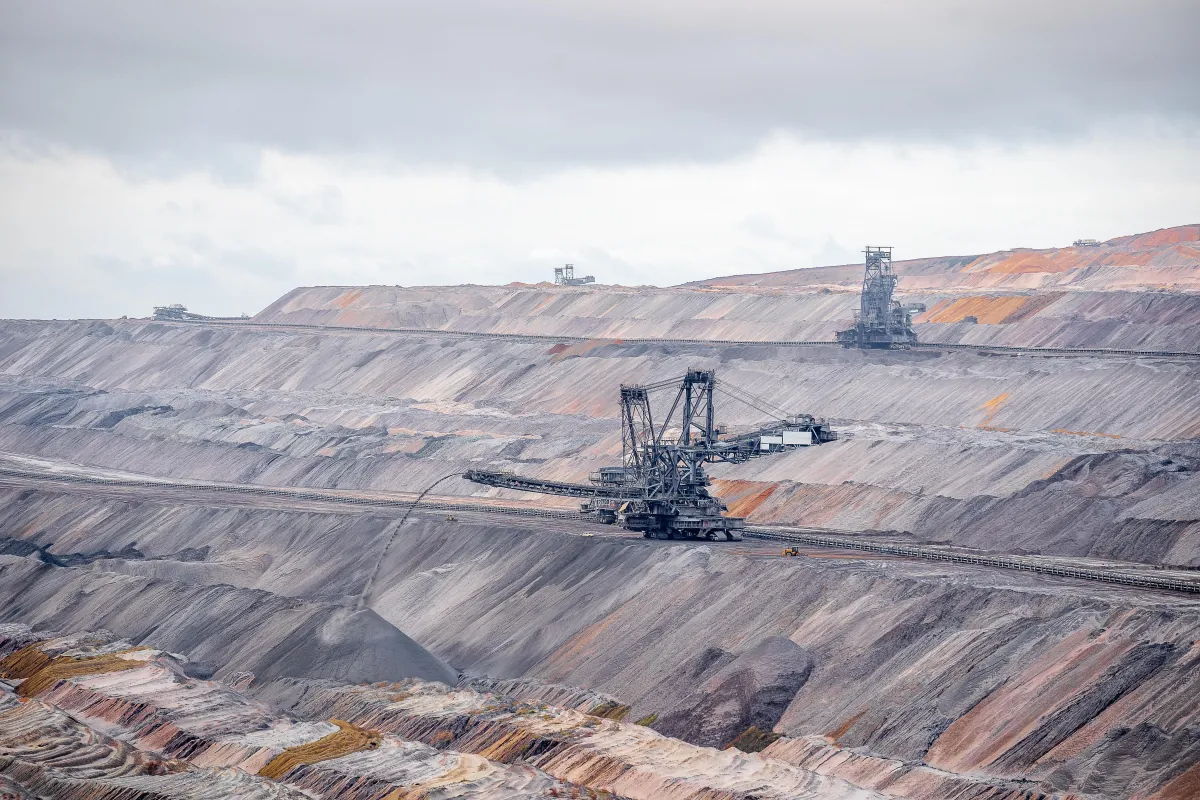
Water Pollution
One carat of a diamond creates over 5,798 pounds of mineral waste.
This waste is left open in pits or dumped into rivers, often releasing toxic substances like mercury and arsenic into water supplies and severely impacting local ecosystems and communities.
Even when inland: runoff from rain eventually washes the toxic chemicals downriver into the ocean. In the Amazon Rainforest alone, hundreds of species have been marked as endangered because of diamond mining runoff.
Habitat Destruction and Deforestation
Mining operations, especially open-pit mining, require large areas of land to be cleared. A single carat, the average for an engagement ring, typically disturbs nearly 100 square feet of land. This deforestation results in habitat loss for countless species.
For example, diamond mines in diverse ecosystems like the African Savannah and the Namib Desert disrupt local wildlife, leading to long-term ecological damage. Diamond mining has even been blamed for the extinction of certain species like the Quagga.
CO2 Emissions
Diamond mining is also a major contributor to greenhouse gas emissions.
The heavy machinery used in mining operations emits substantial amounts of CO2, exacerbating climate change. For scale: a diamond mine produced 727 pounds of CO2 emissions per carat mined in 2022, totaling 164,900 metric tons of CO2 annually.
How is Moissanite Different?
In contrast, moissanite is lab-grown, requiring significantly less environmental impact.
The process of creating moissanite in a laboratory uses fewer resources and avoids the ecological destruction associated with diamond mining. Lab-grown moissanite does not involve deforestation, soil erosion, or water pollution; making it a fully green alternative.
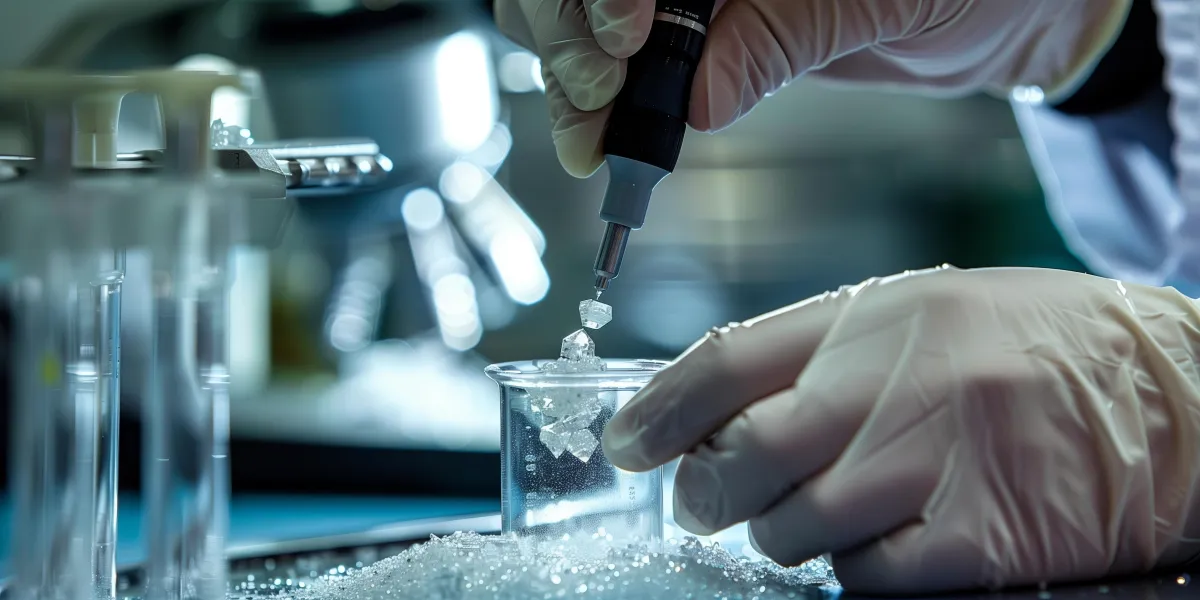
Better for People
The diamond industry is no stranger to controversy. Rife with unsafe working conditions, trafficking, and human rights abuses; diamonds are well known as one of the most exploitative industries on the planet.
The Human Price
Many diamonds, also known as conflict diamonds or “blood diamonds”, are mined in war zones and sold to finance armed conflicts. This often involves forced labor, including child labor, in hazardous conditions.
Reports indicate that 1 million children are exploited in diamond mines worldwide. These operations can lead to severe physical and psychological harm, perpetuating cycles of poverty and violence.
However, the risks aren’t just from the conflict surrounding the diamonds: it’s in the mining itself.
The average life expectancy for diamond miners in certain regions can be as low as 40 years, due to exposure to harmful chemicals and unsafe working conditions.

Diamond Mine in Democratic Republic of the Congo
-Photograph by Lynsey Addario for TIME
How is Moissanite Different?
In contrast, moissanite is lab-grown, ensuring it is ethically sourced and produced. The process of creating moissanite in a laboratory eliminates the exploitation and unsafe working conditions prevalent in diamond mining. Lab-grown moissanite does not involve forced labor or child labor, providing a humane and ethical alternative.


Better for Your Wallet
Finally, moissanite is simply a better value.
Moissanite offers incredible brilliance and fire, often exhibiting more sparkle than diamonds. Its hardness and durability make it an excellent choice for everyday wear, comparable to diamonds in terms of longevity.
Financially, moissanite offers significant savings. While diamonds can cost upwards of $5,000 per carat, moissanite is a fraction of the cost, often less than a 5th. This cost difference is despite the fact moissanite is also ‘more perfect’ on average, with fewer defects, and in larger uniform sizes.
Superior Quality and Appearance
Moissanite is often more perfect than diamonds, with fewer inclusions and flaws. Lab-grown moissanite can be produced to exacting standards, ensuring a high-quality gemstone that rivals the clarity and color of the finest diamonds.
When looking for everyday jewelry, moisannite is the simply better option. Its affordability, combined with its stunning visual appeal, makes it a responsible and attractive choice for any piece.
With moissanite, you get the glitter, shine, and beauty of a diamond, without the overinflated costs.
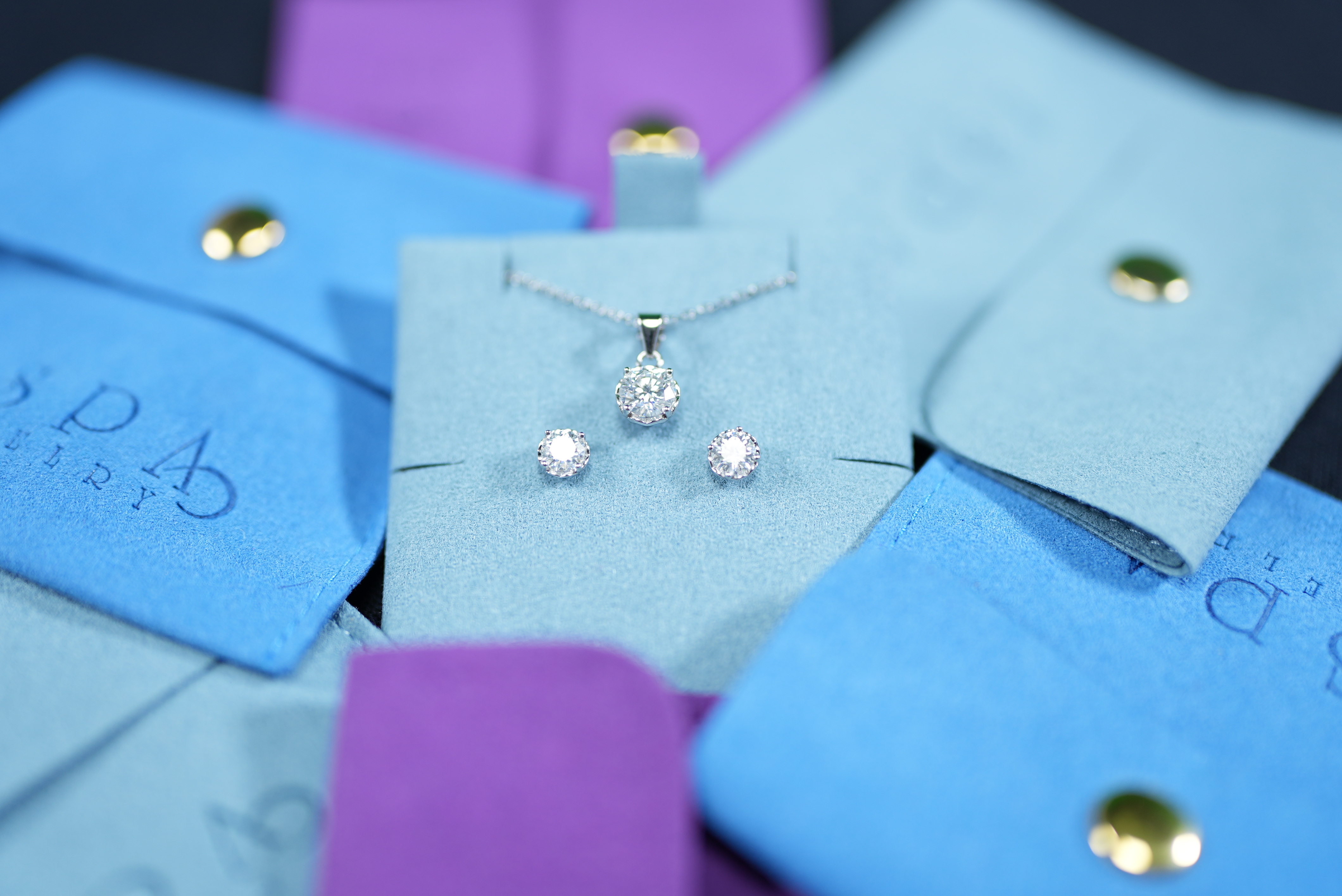
Conclusion: Moissanite is The Better Choice
Better for people, planet, and purposeful jewelry, moissanite is the simply better choice.
Diamonds may have been the gold standard for luxury and love, but the dark side of their environmental destruction, unethical practices, and inflated costs cannot be ignored any longer.
If you’re looking for a responsible, beautiful, and cost-effective decision, moissanite is the way to go! Whether for an engagement ring, a special gift, or a statement piece in your own wardrobe: go with moissanite.Footer PC 2
Products
Unending Love Necklace




